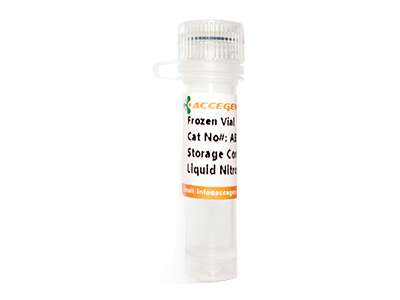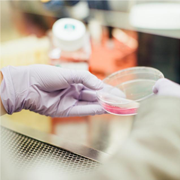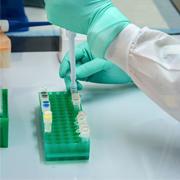Home > Products > Tumor Cell Lines > Human Tumor Cell Lines >
59M |
||||
|---|---|---|---|---|
| Product Name |
59M |
|||
| Price | Get Quote | |||
| Product Code | OAW59M; OAW 59M; 59 M |
|||
| Cat.No |
ABC-TC0016 |
Species |
Human |
|
| Size/Quantity |
1 vial |
Biosafety Level |
1 |
|
| Shipping Info |
Dry Ice |
Storage |
Liquid Nitrogen |
|
| Description |
Human ovarian tumour epithelial. Derived from a patient with carcinoma of the ovary and is of ascitic fluid origin. |
|||
| Disease | Ovarian Serous Adenocarinoma |
|||
| Source Organ | Ovary |
|||
| Recommended Medium And Supplement | DMEM + 10% FBS |
|||
| Citation Guide |
When you publish your research, please cite our product as “AcceGen Biotech Cat.# XXX-0000”. In return, we’ll give you a $100 coupon. Simply click here and submit your paper’s PubMed ID (PMID). |
|||
| Application | For research use only |
|||
| Growth Conditions | 37 ℃, 5% CO2 |
|||
| Cell Type | Epithelial |
|||
| Growth Mode | Adherent |
|||
| Product Type |
Human Ovarian Cancer Cell Lines |
|||
| Product Image |

|
|||
Frequently Asked Questions
-
What is the recommended seeding density for 59M cells?
The recommended seeding density for 59M cells can vary depending on the specific experimental needs and growth characteristics. As a general guideline:
Initial Seeding Density: Start with a seeding density of around 5,000 to 10,000 cells per square centimeter (cells/cm²) of growth area. Adjust based on the growth rate and experimental requirements.
-
What is the recommended culture medium and conditions for 59M cells?
Recommended Culture Medium and Conditions for 59M Cells:
Culture Medium: 59M cells are typically cultured in RPMI-1640 medium supplemented with fetal bovine serum (FBS), usually at a concentration of 10% to 20%. Antibiotics such as penicillin-streptomycin are commonly added to prevent contamination.Temperature and Atmosphere: Maintain the cells at 37°C in a humidified atmosphere containing 5% CO₂. This environment helps to mimic physiological conditions and supports cell growth.
-
What are common issues encountered with 59M cell culture and how can I troubleshoot them?
Poor Cell Attachment: Ensure that culture vessels are properly coated with extracellular matrix proteins (e.g., collagen, fibronectin) before seeding. Also, avoid over-trypsinization during passaging, as excessive trypsin can damage cell membranes and affect attachment.
Slow Growth or Reduced Viability: Check the freshness and quality of the medium and FBS used. Serum should be heat-inactivated to minimize the risk of viral contamination. Ensure that cells are not over-confluent and are regularly subcultured to maintain active growth.
Contamination: Maintain strict aseptic techniques, including frequent cleaning of the work area and equipment. Use antibiotics judiciously to prevent bacterial or fungal contamination.
pH Imbalance: Monitor the pH of the medium regularly and adjust if necessary to maintain optimal conditions for cell growth (typically pH 7.2-7.4).
-
How do I cryopreserve and thaw 59M cells while maintaining their viability and functionality?
Cryopreservation and Thawing of 59M Cells:
Cryopreservation:Preparation: Use a freezing medium containing RPMI-1640 supplemented with 10-20% FBS and 10% dimethyl sulfoxide (DMSO). DMSO helps prevent ice crystal formation during freezing, which can damage cells.
Freezing Protocol:
Harvest cells during exponential growth phase.
Resuspend cells in the freezing medium at a concentration of 1-2 million cells per mL.
Transfer aliquots of the cell suspension to cryovials.
Place cryovials in a controlled-rate freezer or a -80°C freezer for slow freezing.
Transfer cryovials to liquid nitrogen for long-term storage (below -130°C).
Thawing:Thawing Protocol:
Quickly thaw cryovials in a 37°C water bath until only a small ice crystal remains.
Transfer the cell suspension to a tube containing pre-warmed RPMI-1640 medium with FBS (10-20%).
Centrifuge cells at low speed to pellet them, remove the supernatant, and resuspend cells in fresh medium.
Plate cells in culture vessels pre-coated with appropriate matrix proteins and incubate in a 37°C, 5% CO₂ atmosphere.
- ONLINE INQUIRY
- PRODUCT REVIEWS
Fill out a request in the form below and we’ll get back to you within 24 hours with a quote.





